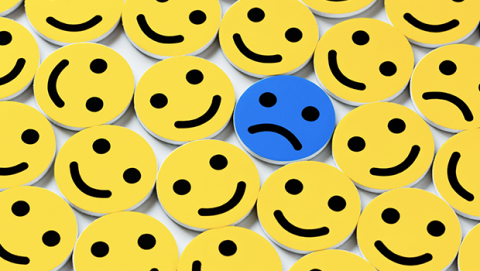One of the great perks of the workplace – the opportunity to work alongside and communicate with people from a broad range of backgrounds – can quickly become one of its biggest challenges when you have to work with someone who has a vastly different style than your own. The first and most important step in working effectively with everyone is a mindset shift – a shift to apatheia.
Apatheia, not to be confused with apathy, is a state of being where you care appropriately about what is going on around you but are not disproportionately impacted or affected by these external events. Here’s how to use it to your advantage at work.
[ How strong is your EQ? See our related article: Emotional intelligence test: 5 self-evaluation tools for leaders. ]
The mindset sweet spot
In emotional intelligence terms, we think of apatheia as an aspect of independence. We don’t want to be so emotionally close to others that they can have too much of an impact (what we call enmeshment), nor do we want to be so far away from them that we become uncaring (dissociation).
When we can find the sweet spot between these two states, we are much better able to separate what happens “out there” from impacting what happens in your head.
When you are in an enmeshed state, you may care way too much about someone else’s behavior, actions, or beliefs, even when their actual impact on you is minimal. Dissociation leads to the opposite – you do not care at all about the other person.
Dissociation might seem like a safe option when dealing with someone you don’t like, but two people who are dissociated are unlikely to be collaborative. And if you are working in a team, some degree of collaboration is likely required. If you are in a leadership position, dissociation is even less of an option.
So how does this understanding of apatheia and independence help you work effectively with others? It provides a platform for the most important rule of workplace collaboration: You don’t have to like the people you work with, but you do have to work with them.
Check your own emotional responses
Perhaps the first and most important thing is to recognize that your dislike of another person boils down to the feelings you have towards them. This is a result of what you know about them as well as your experiences with them at work. Looking at it in this cold, factual way is an important step in moving toward that aforementioned sweet spot. After all, they are just a bundle of characteristics and behaviors, just like you.
Their different views on significant subjects like politics or religion can, and often do, impact how you view them. That’s just human nature, and it’s a tough thing to eliminate. However, you can manage your reactions to it.
For example, maybe a person who has an opposing political viewpoint to yours has said things that go strongly against your belief systems. Does that make them a bad person? No. It simply means they have a different perspective than you. Just as your perspective is a product of your experience and psychological makeup, so is theirs. If you want to have your views and perspectives respected, you must first respect theirs. This sounds easy to do, and a great many people would say they do it, but you have likely seen instances where people disrespect other people’s views – it’s a common occurrence.
Now that you respect their views and perspectives, can you see them as a productive, inventive, and creative team member? If they come up with an idea for a new product or a solution to a problem, can you look at that product or solution objectively, without your feelings about the person coloring your judgment?
Unfortunately, science says that is very difficult. In a bias known as reactive devaluation, we tend to place less value, or even a negative value, on ideas or proposals from people we distrust or dislike. The key here is to manage, or suspend, that distrust and dislike.
Ready for nine tips on how to do better with that person on a daily basis? Read on:






